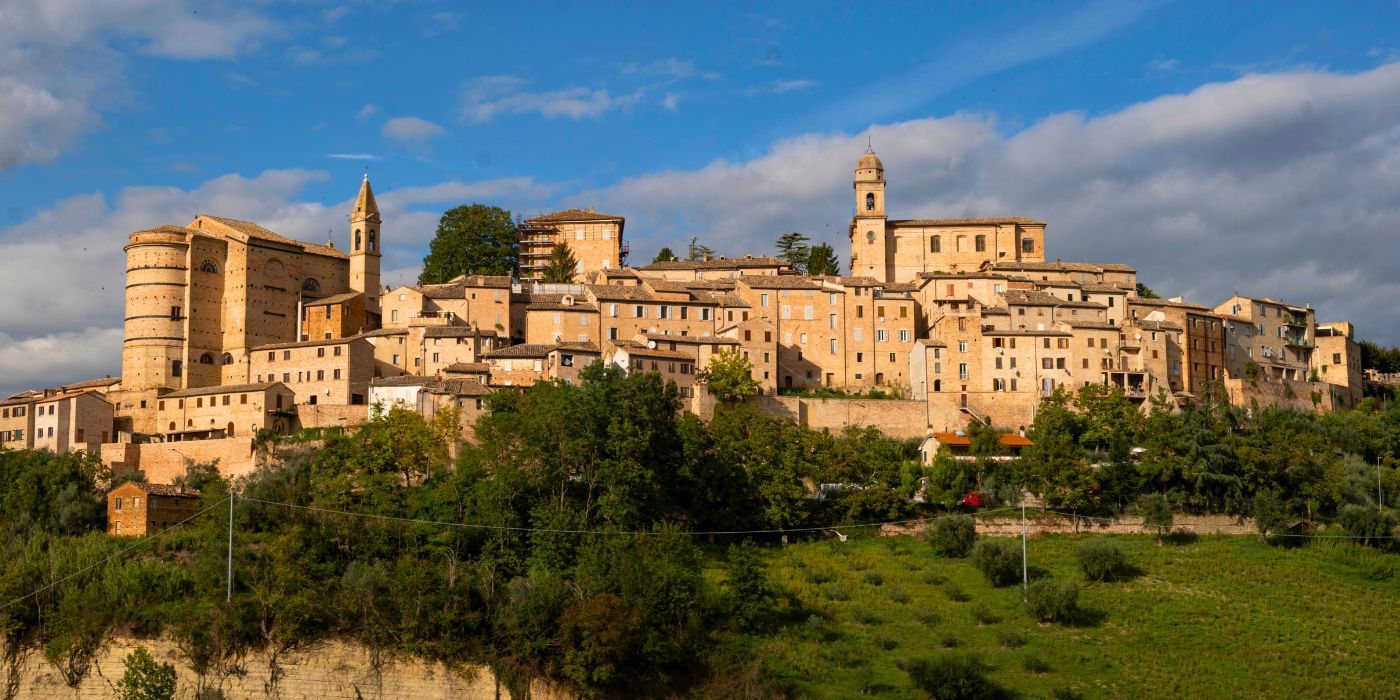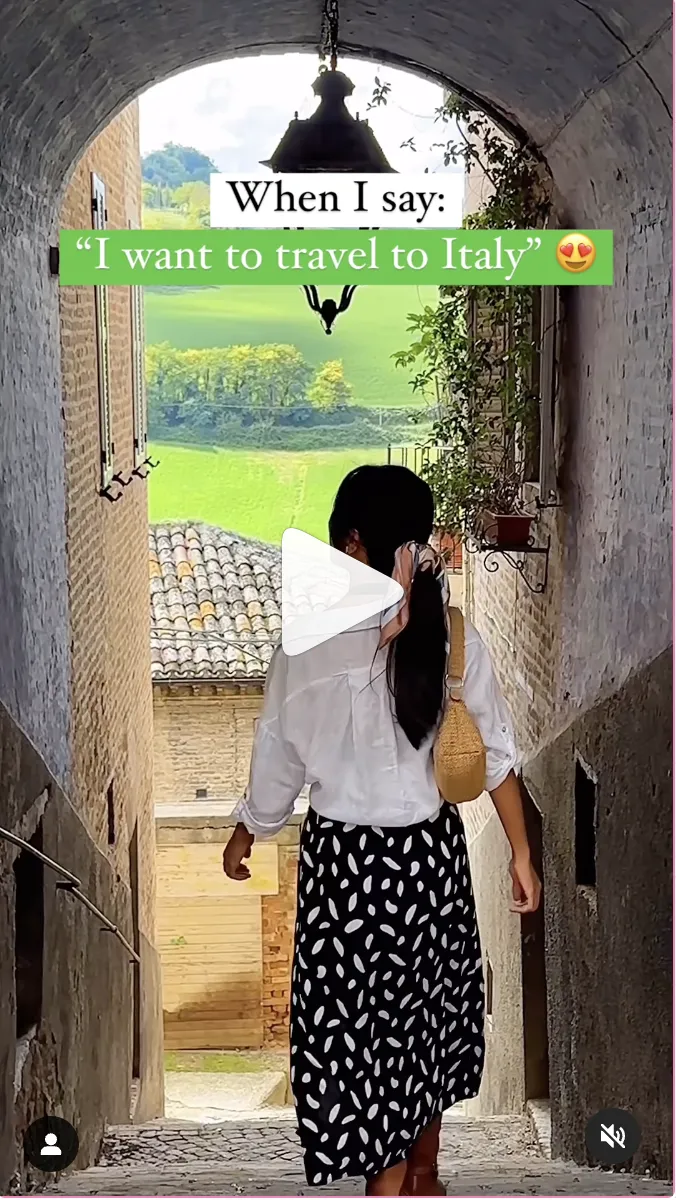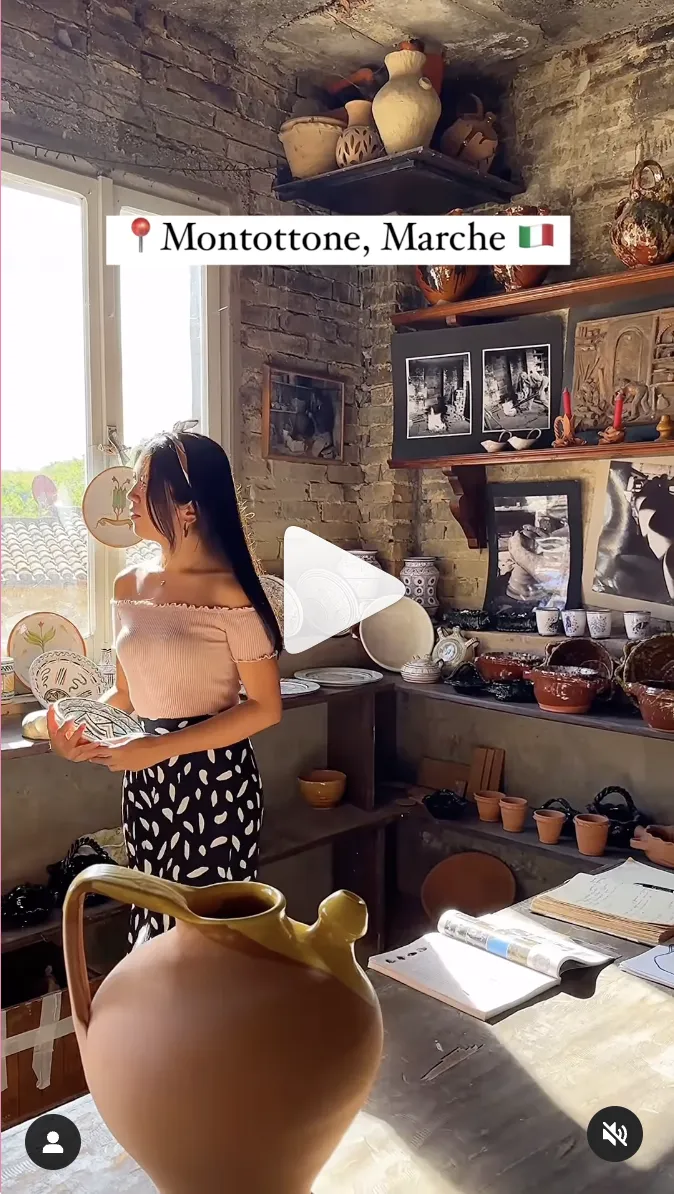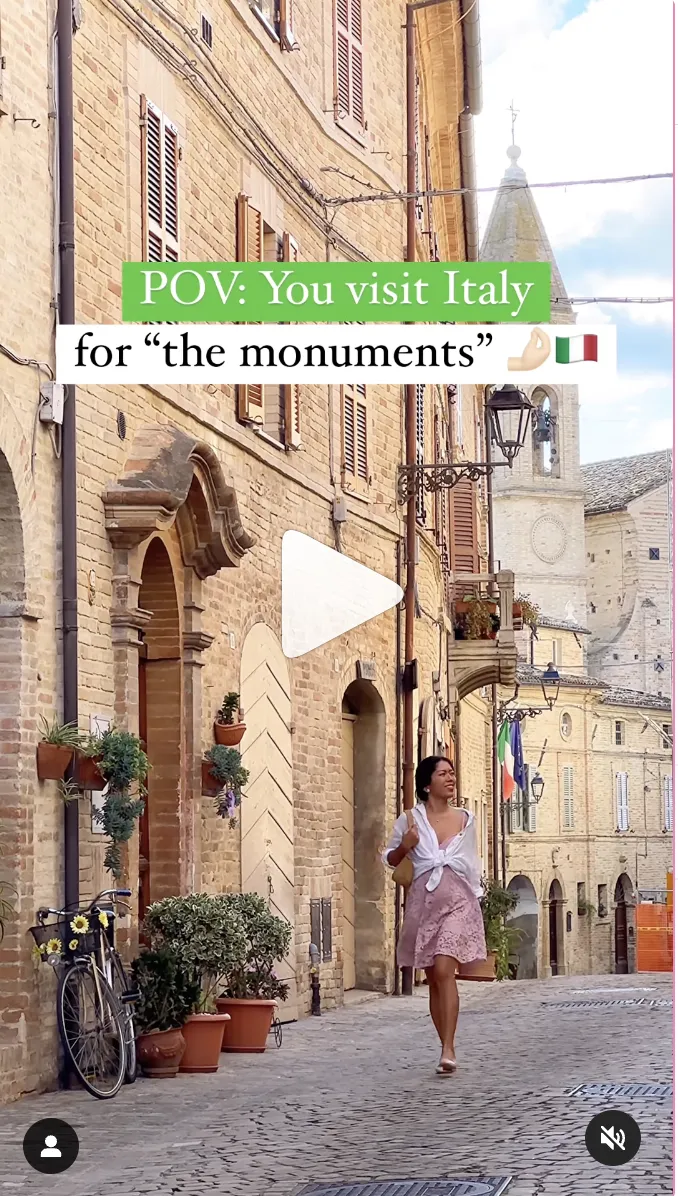Small villages, often, are the ones able to tell much more better than cities the greatest, most beautiful and authentic stories of the territory. Stories that speak of the excellence of human and nature, of perfectly preserved places from remote eras, of folklore and evocative traditional events. All of this is Montottone, a gem to be discovered in the province of Fermo.
Lu paese de li coccià, or the village of potters as it is friendly called in Le Marche region for its exceptional craftsmanship culture, is indeed a destination that perfectly combines tranquility, landscape beauty, manufacturing refinement and tradition. An ideal place for those who intend to rediscover slowness as the core of traveling, or for those who, instead, perhaps are looking for a special location where to spend part of their lives.
Among fine artisan ceramics known for their excellence at an international level, a medieval historic centre so beautiful and well preserved that it gives the feeling that time has stopped, and a green hilly landscape waiting to be explored, here is everything you need to know to visit and experience Montottone.
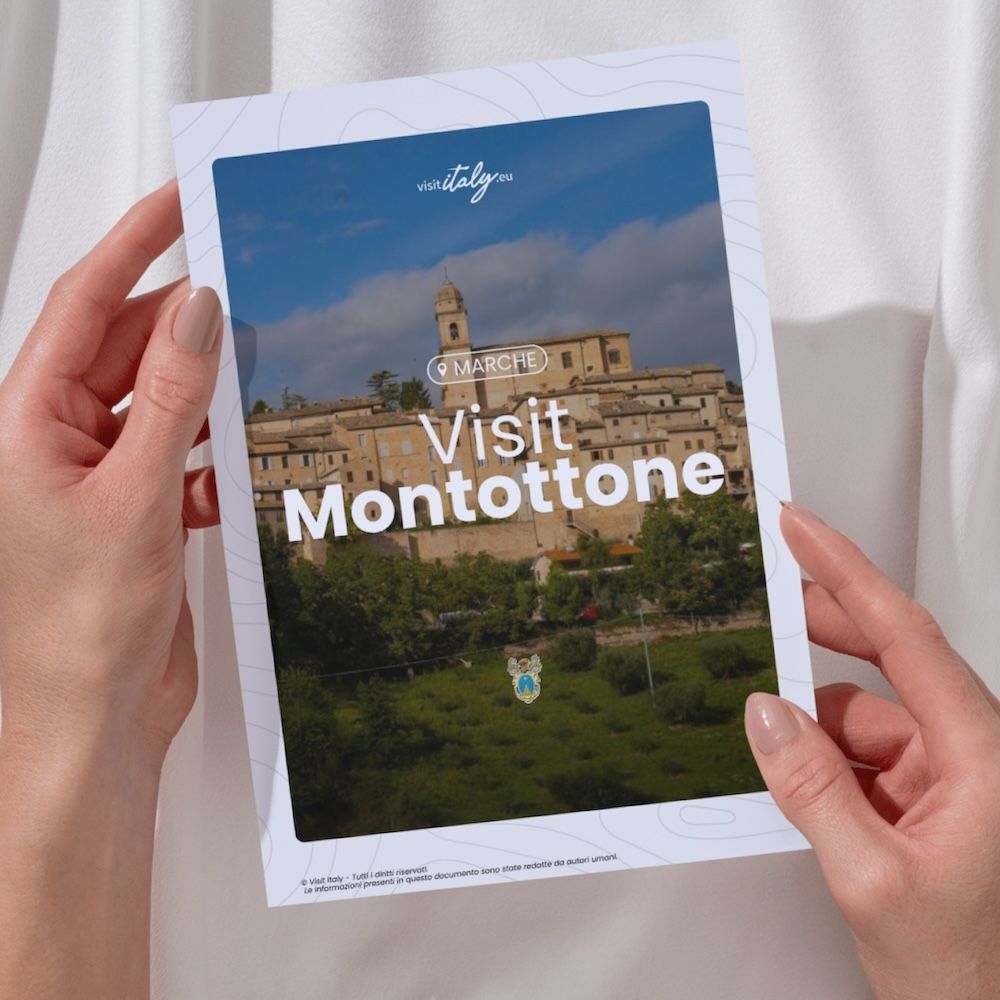
Montottone, history of lordships and castles within Marca Fermana
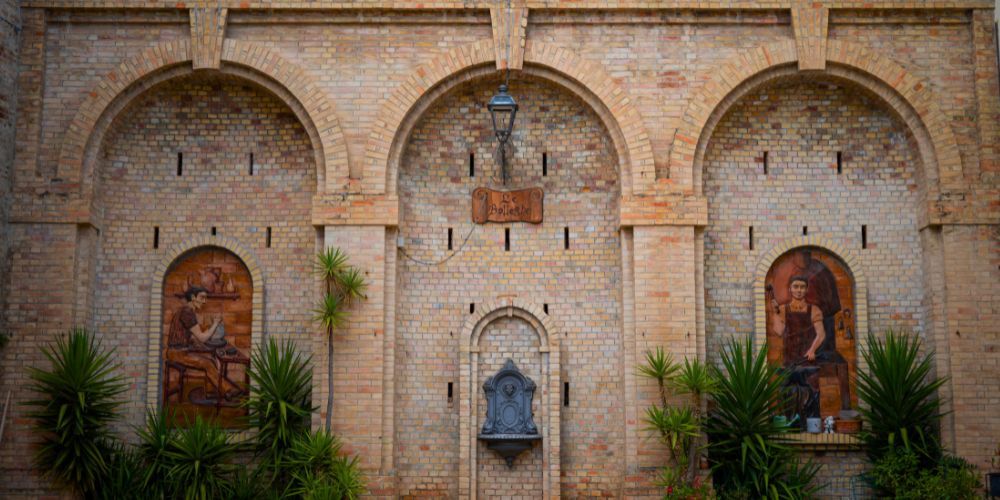
First of all, let's take a look at the highlights of the rich history of the village of Montottone, discovering a glorious past made of lordships and castles between the Middle Age and the Renaissance, in the setting of the historic region of Marca Fermana.
The ancient city of Mons Actonis, or Monte di Attone, has always been a significant point of reference on the map of the province of Fermo, in a continuous alternation of political influences and power struggles between religious institutions and great Italian lordships.
The first important date to remember is 1191, when Pope Celestine III bestowed the Benedictine monks the temporal and spiritual dominion over the city of Montottone. This was the first affirmation of religious power in the territory, further made more significant in 1221 when Pietro IV, bishop of Fermo, obtained the castle of Montottone as a fief to rule.
After two centuries, precisely in 1397, people of Montottone rebelled against the power exercised by the city of Fermo in a feudal manner. This event triggered a long series of political and social turmoil and instability, where Montottone finally came under the dominion of Ludovico Migliorati of Sulmona in 1405, still suffering several external attacks such as the siege of the troops of Malatesta of Cesena in 1415.
After the death of Migliorati in 1428, Montottone was subjected to the Rector of the Church of Marca Fermana, and then a few years later, in 1433, it came under the dominion of the warlord Francesco Sforza while he was engaged in a military campaign against the Papacy in service for the Visconti family of Milan. Furthermore, it was during this century that the old name Mons Actonis was abandoned and replaced with the actual Montottone.
Another crucial date was 1537, the year in which Pier Luigi Farnese, Duke of Castro and Parma and natural son of Pope Paul III, removed the government of Marca from Fermo, temporarily moving it to Montottone with the establishment of the Ecclesiastical State in Agro Piceno, led by Cardinal Raduccio Farnese. This event entailed the need to reorganize all the castles previously subject to the power of Fermo, transforming Montottone into a city of luster and well-being for at least one decade, residence of the local governors who followed one another exercising their supremacy over the fiefdoms of the territory. Great witnesses of the important past of Montottone in those years, today, are the remains of the mighty castle walls within which the town has remained almost unchanged.
From that moment, Montottone went through centuries of substantial tranquility, remaining under the control of the Papal State until the fateful Italian Unification, the year in which Le Marche region effectively became part of Italy.
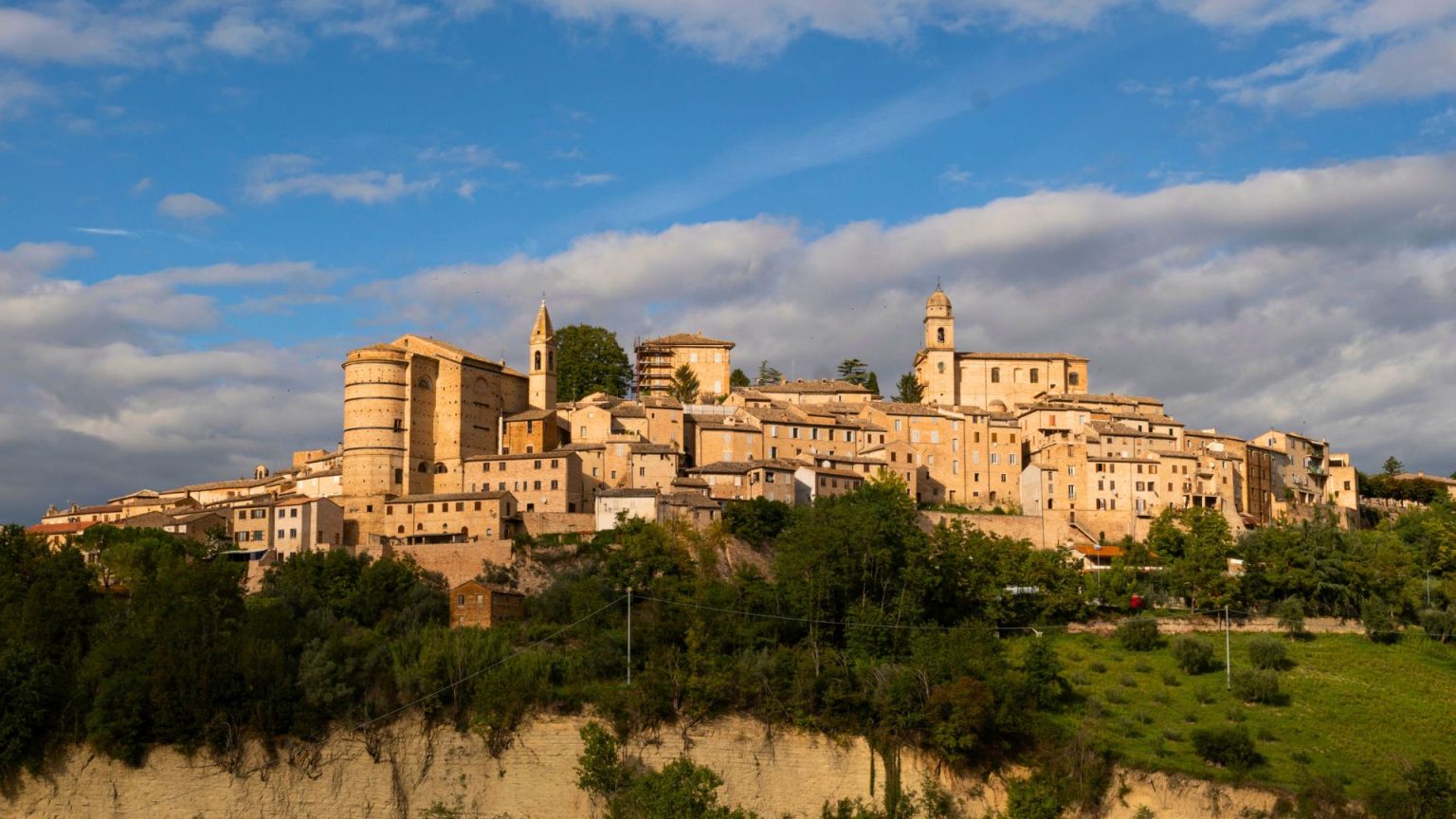
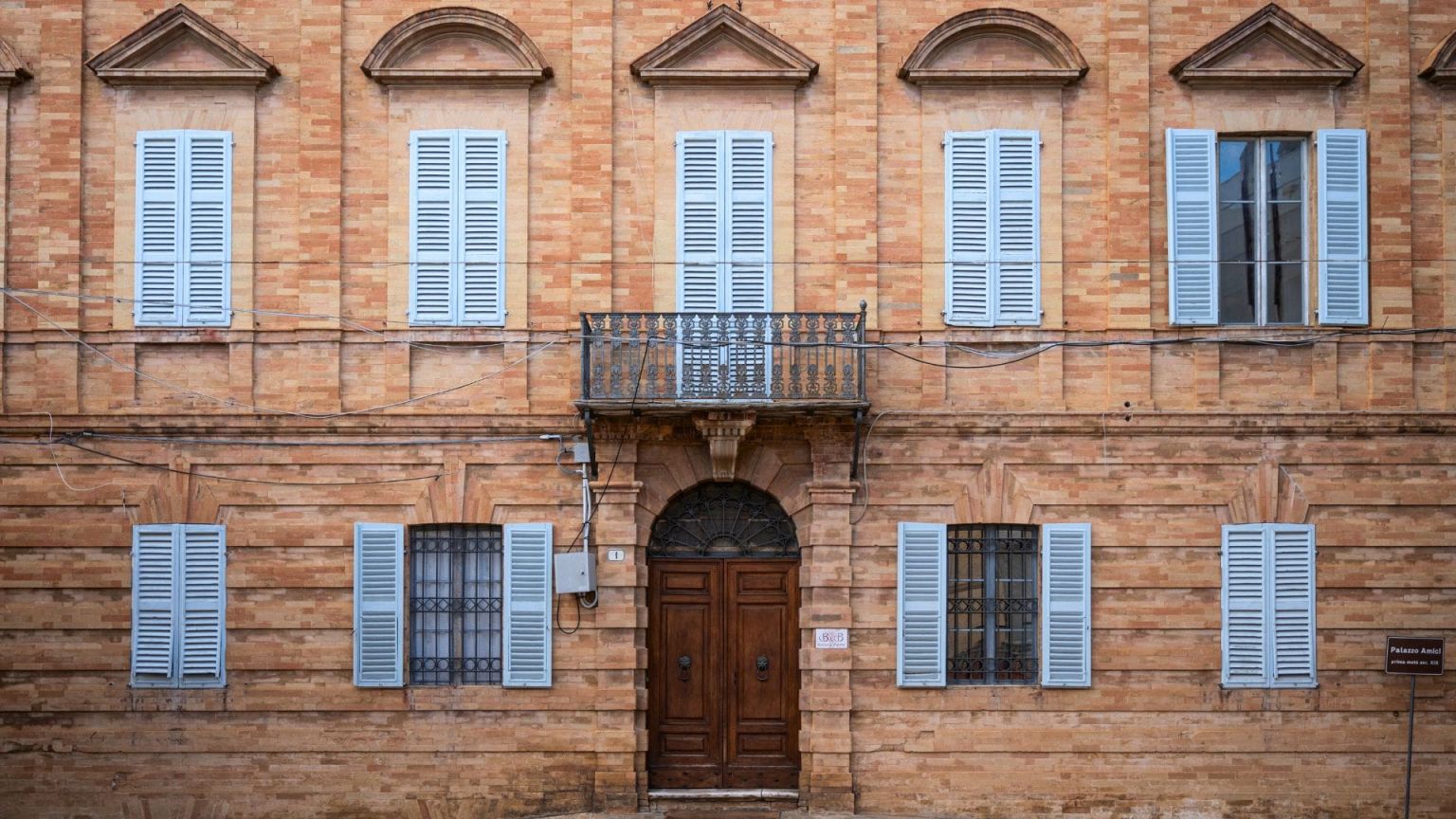
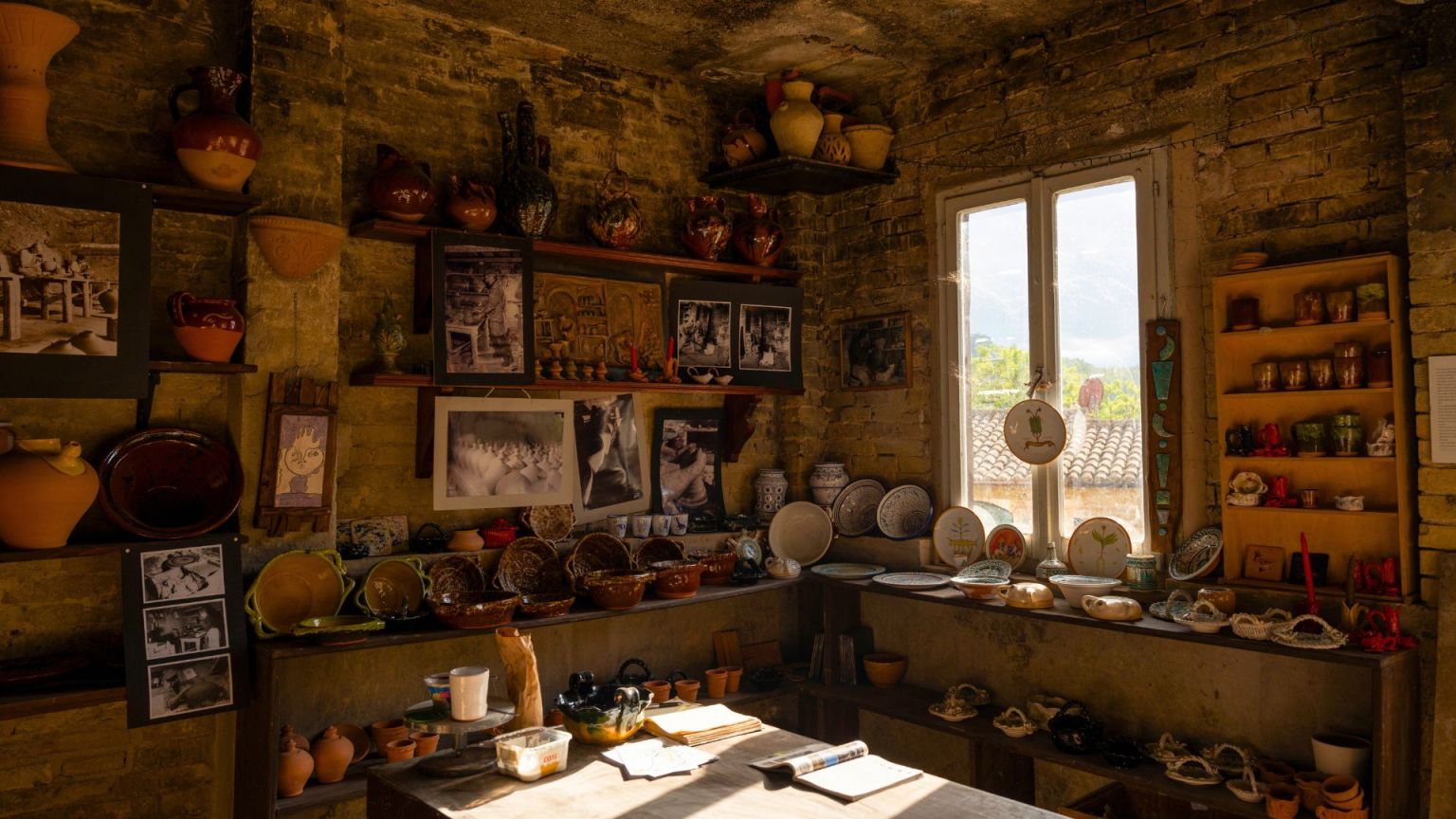
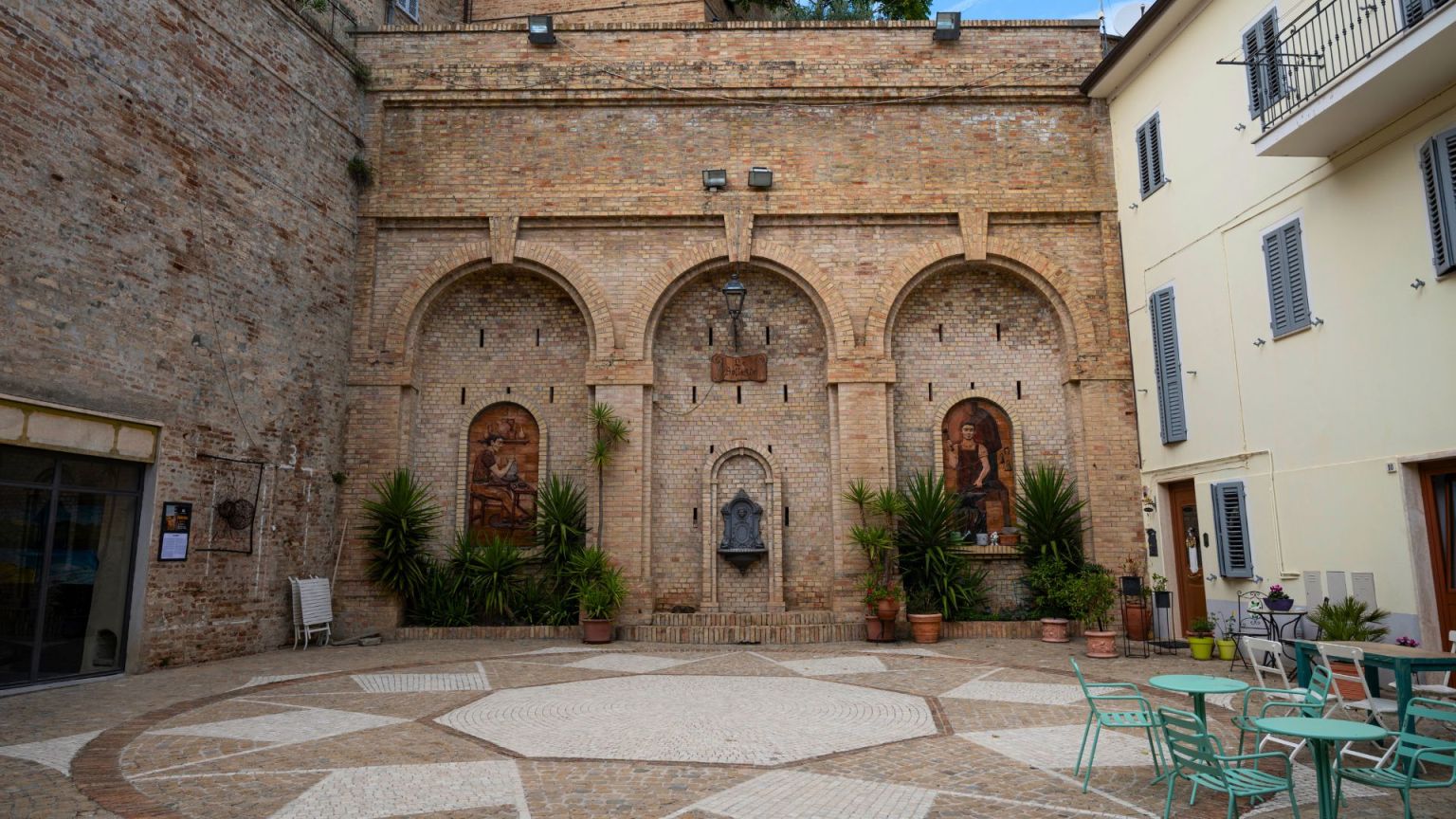
Where is Montottone
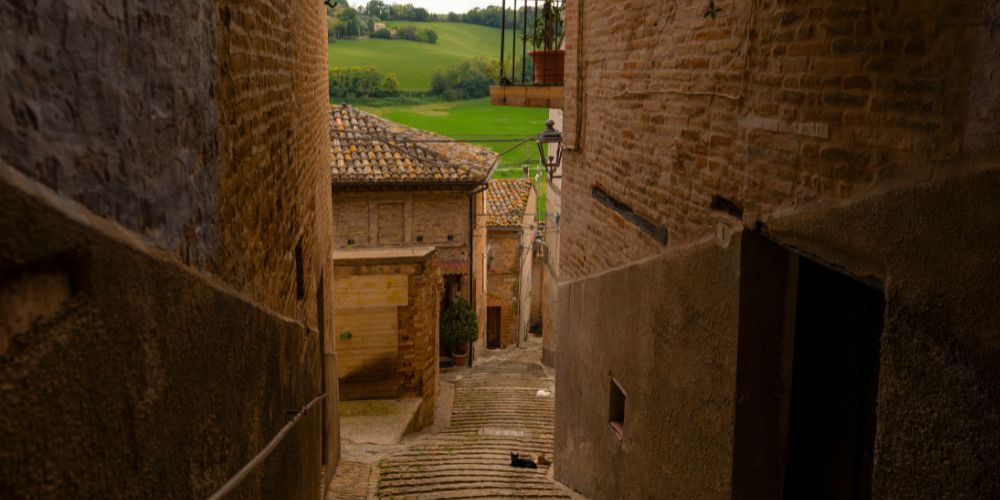
Located in the middle of the province of Fermo, Montottone is a charming hilltop village that stands on a cliff at 277 m above sea level, around 20 km south-west of the local capital, in a beautiful, vast and varied panorama that embraces both the Adriatic Sea and the Apennines - in particular the Sibillini Mountains - respectively to the east and to the west.
The territory of Montottone, and the hinterland of the province of Fermo, is also characterized by the presence of three important rivers, crucial geographical elements in the local landscape. These are Aso, which marks the southern border with the province of Ascoli Piceno; Tenna, which on its long flowing traces the northern border with the province of Macerata; and Ete, which instead crosses the province, a little further north of Montottone, until it flows into the Adriatic.
The valleys drawn by the three rivers in the hilly landscape of the area of Fermo, in particular within the lands between Aso and Ete where Montottone is located, are also covered with thick woods where mainly holm oaks, durmast oaks and maples grow. An extremely enchanting and relaxing setting to enjoy the territory, perhaps taking advantage of the wonderful colors of nature in autumn or in full spring, with hikes on foot or by bicycle along the paths and river avenues.
Explore Montottone and the nearby villages with this tourWhat to see in Montottone: the medieval historic centre
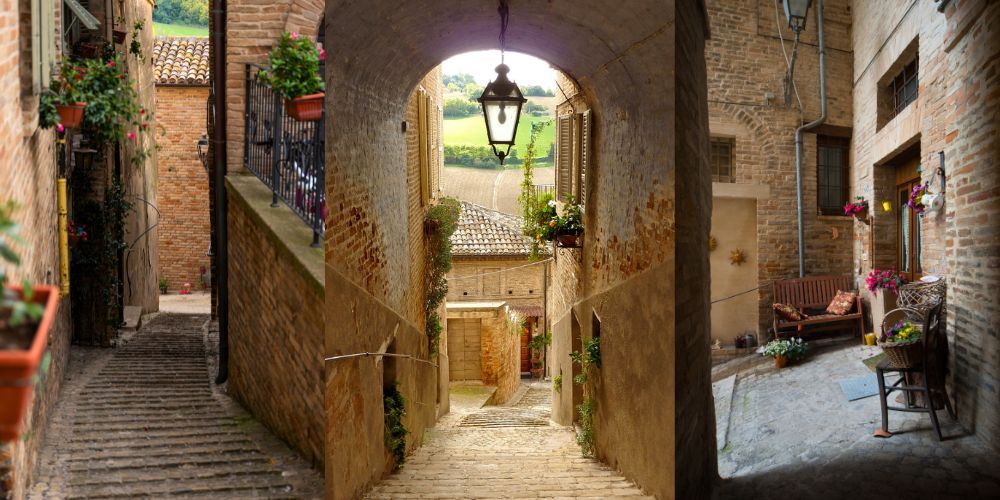
Given its rich historical and cultural background, visiting Montottone feels like taking a journey into the past to a place where time seems to have stopped, proceeding at a very different pace rather than the large contemporary cities.
A place where history has left visible traces of its passage, giving us back today - fortunately - a perfectly preserved medieval historic centre, full of attractions and glimpses to relive the lustrous past of this small town.
Despite the small size of the village, currently inhabited by only a few hundreds inhabitants, Montottone has so much to see, to touch, to feel. An absolutely unmissable experience discovering churches, squares and unique places, in one of the most evocative locations within Marca Fermana.
The Church of Santa Maria Ausiliatrice
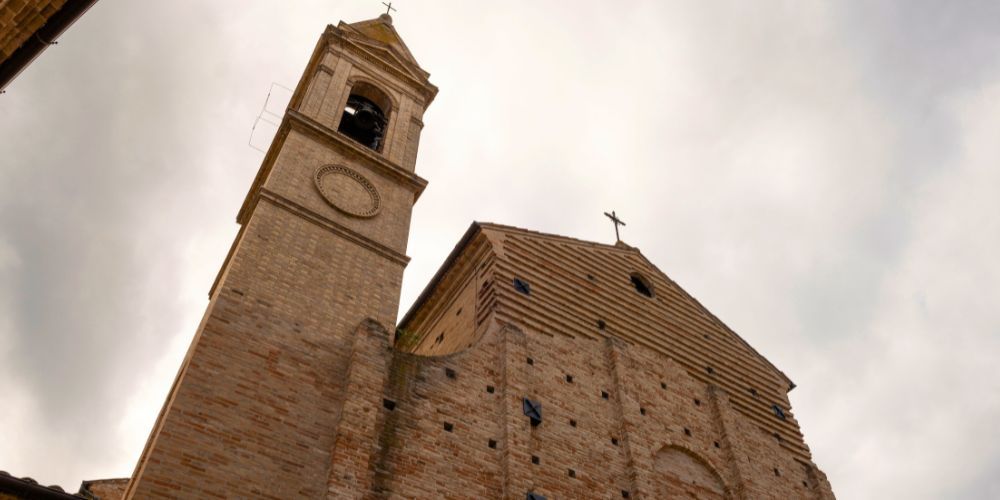
Along the picturesque Corso Vittorio Emanuele II, in the heart of the historic centre of Montottone, there is the ancient and evocative Church of Santa Maria Ausiliatrice, an essential point of interest for those who love art in all its forms.
The current church, of medieval origin, was then enriched and renovated in the Renaissance with a new facade and a new portal dating back to 1515, and houses two precious paintings of sacred art - the Resurrection of Christ, a work by Conca (from the 1700’s) and the Virgin between St. John the Baptist, St. John the Evangelist, St. Catherine and the Magdalene, a masterpiece by Pagani (from the mid-1500’s).
The latter is a real attraction to discover here in Montottone, a canvas measuring 267x215 cm, recently restored in Urbino, placed on the right wall of the left side of the transept. The work is characterized by a notable plastic sense in the creation of the details of the figures represented and by accurate anatomical research, presenting peculiar aesthetic elements that are strongly reminiscent of the masterpieces of other very important artists of that era, in particular Madonna del Pesce and Madonna of Foligno by Raphael.
Due to some severe damage to the building caused by the seismic phenomena that have shaken central Italy in recent years, the Church of Santa Maria Ausiliatrice is sometimes inaccessible to the public.
The medieval Cistern

Right next to the Church of Santa Maria Ausiliatrice (just under it!), still in Corso Vittorio Emanuele II, there is also the medieval Cistern of Montottone. This is a particularly suggestive attraction to visit in the town, perfectly preserved despite the passing of the centuries, an important and interesting example of medieval engineering (built in the 1200’s and enriched in the 1400’s) that has no comparison elsewhere in the province of Fermo.
Divided into two spacious levels (which can both be visited today), with a depth of 15 m x a width of 6 m, the Cistern of Montottone must have been large enough to quench the thirst of the entire population in times of drought and during frequent and long sieges. The Cistern is also iconic for its size and for the quality of the stonework, worthy of a prominent city, one of the symbols of the prosperity achieved by Montottone in the late Middle Ages.
The Church of San Pietro Apostolo
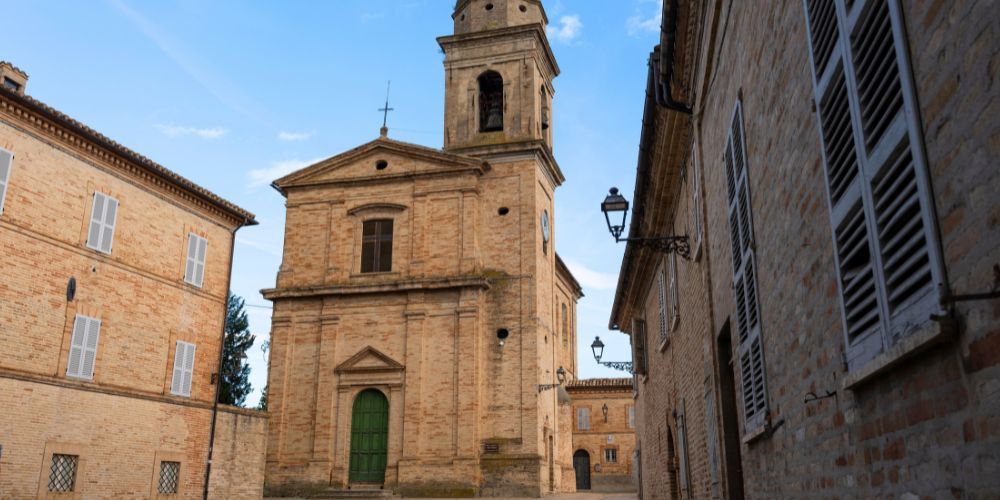
An interesting religious place to visit in Montottone is the Church of S. Pietro Apostolo, located in Piazza Marconi (also known as Piazza Castello) on a small hill where once stood the ancient city castle and fortress.
The church, probably of Renaissance origin, was owned by the municipality with the title of Pievania. In 1603 several bastions of the adjacent fortress were demolished, and the church was then rebuilt from its foundations and enriched in full Baroque style; furthermore, between 1758 and 1762, it was expanded again with the construction of the Collegiata.
The Church of S. Pietro Apostolo features valuable arabesques and basreliefs sculpted by Interlenghi, a 1700’s sculptor born in Montottone and active in the Marche region, one of the many examples of artisan and artistic mastery in the village.
In the 1800’s the square's setting was further enriched with the construction of Palazzo Ferracuti-Amici in fronte of the church, a beautiful example of neoclassical art with its stunning facade. On the other two sides of the square we find two other interesting historical buildings, that are Palazzo Breccia-Fratadocchi and Residenza d'Epoca del Vecchio Tiglio.
The former Monastery of San Francesco
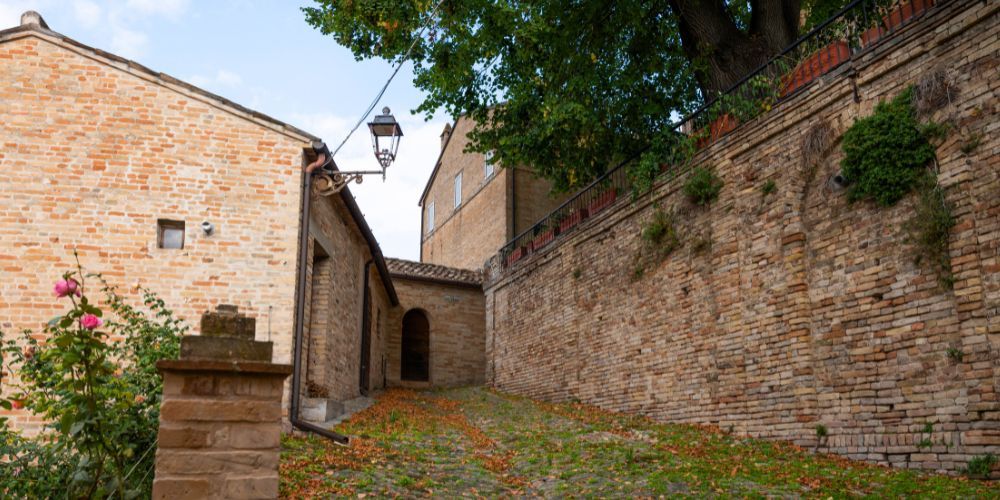
On a hill in the easternmost side of the ancient village of Montottone, surrounded by thick woodland according to the taste and needs of medieval monks, stands the former Monastery of S. Francesco with the namesake church right next to it, formerly dedicated to S. Maria dell’Annunziata.
The date of origin of the monastery is uncertain, however some historical sources testify to its existence as early as 1191 when it was inhabited by Benedictines, before being donated as a residence to the Friars Minor, perhaps even before the death of St. Francis himself.
The church was then expanded compared to the original structure in 1351, and centuries later, in 1767, it was completely restored with a valuable enrichment work focused above all on aesthetics. In fact, some statues by Interlenghi and an elegant inlaid choir by Mircoli da Monterubbiano were placed inside the church-monastery; the capitals of the building's columns were decorated with interesting and evocative ornaments - in particular the two lions facing two dragons - and a new main door made of Istrian stone was also installed.
Today the former Church-Monastery of San Francesco in Montottone is condemned anyway, seriously damaged by the devastating earthquake that struck central Italy in 2016, that affected also the southern area of Le Marche.
The Church of Madonna delle Grazie
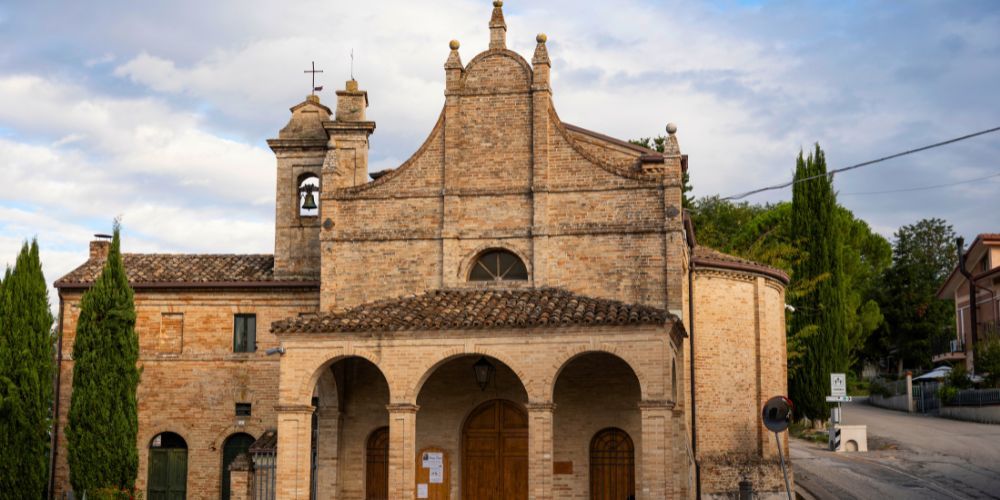
Located at the doors of the most modern area of Montottone, along the main access road to the town, the Church of Madonna delle Grazie is a must-see for those who wish to visit the historic village of potters of the province of Fermo. Coming from the provincial capital, this charming church is in fact the first evocative testimony of the past of ancient Mons Actonis, despite being located outside the historic centre.
Built between the end of 1400's and the beginning of 1500's in the unusual Greek cross structure, the Church of Madonna delle Grazie is indeed the result of a very particular event that took place in the often troubled scenario of the remote power feuds between Montottone and Fermo.
According to the reconstruction of historical sources, after more than ten years of bloody conflicts between the political factions in force - on the one hand those who wanted more independence, on the other those who preferred to join Marca Fermana - following the overthrow of Sforza's dominion in the region, and after the actual victory of the city of Fermo in 1458 after a three-year siege, in 1459 was signed an agreement for which the castle and its fiefdoms passed to the capital, acknowledging the people of Montottone civil rights and above all amnesty for those who had fought in the ranks of the opposing faction against Fermo.
This event, as a formality for that age, was definitely sealed with the construction of a votive chapel entirely financed by citizens, iconically dedicated to Madonna delle Grazie. Its location was not random at all, as it was requested to build the small church in a crucial point of transit to and from Montottone, as a warning to the population for the pact with Fermo but also as a symbol of protection for the entire town.
Today the Church of Madonna delle Grazie is a significant place of worship for the entire community, as after its foundation the cults of Saints Rocco, Fabiano and Sebastiano were also transferred there, as well as that of the Virgin Mary. Inside the sanctuary, on the altar, there is also an extraordinary original fresco from 1400's picturing the Virgin with Child and Choir of Musician Angels attributed to Fra Marino Angeli, a famous local monk-artist born in Santa Vittoria In Matenano.
Discovering Montottone, historic village of artisans
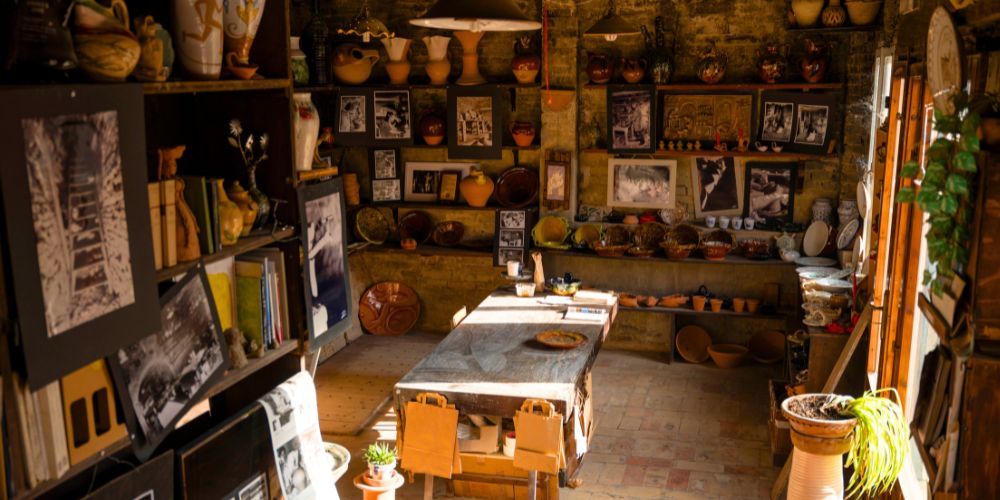
For a town like Montottone, craftsmanship is more than just an economic activity, much more. Here, in this splendid medieval village within the hills of the historic Marca Fermana, craftsmanship is first and foremost the essential essence of the cultural and territorial identity of entire generations of masters, who have followed one another over the centuries, who have made their profession an art of excellence at an international level.
It is no coincidence that Montottone is known as lu paese de li coccià, the village of potters, the land of origin of notable masters of clay and ceramics processing who can boast a wide and active reference market throughout the world, in particular the United States and the United Kingdom, as well as a profound and meaningful twinning with the German village of Kohren-Sahlis originated from the common historical culture for ceramic craftsmanship and the European dream of brotherhood between peoples.
An ancient craftsmanship tradition whose origins are not precisely known but which, according to some historical sources, dates back to the core of the Middle Ages - between 1200’s and 1300’s - when Montottone was part of the fiefdom of Fermo. A tradition that has endured for all these centuries, crossing different eras and mixing different artistic styles, even surviving the very strong depopulation of the second half of 1900’s when only a few master craftsmen remained here to live and practice their profession. Among these the potters from the Bozzi family stand out, inextricably bound to the tradition of artisan terracotta processing and the manual treatment of the fine ceramics to be discovered by visiting the town.
One of the unmissable attractions to relive the charm of the potter's craft in Montottone is the Museum of Artisan Ceramics at the "G. Perlasca" school, which houses and exhibits many examples of terracotta objects and a collection of original professional work tools used in this field until the 1960s. The museum also includes a laboratory to deepen and experiment with knowledge and operational techniques; furthermore, during the school year the museum organizes numerous visits of school groups from all over the territory for educational and entertainment purposes.
Here in Montottone the wood craftsmanship is particularly relevant too, a sector still today full of specialized masters especially in the field of restoration and production of furniture, decorative furnishings and accessories made from different qualities of local wood.
Events not to be missed in Montottone: history, folklore and food
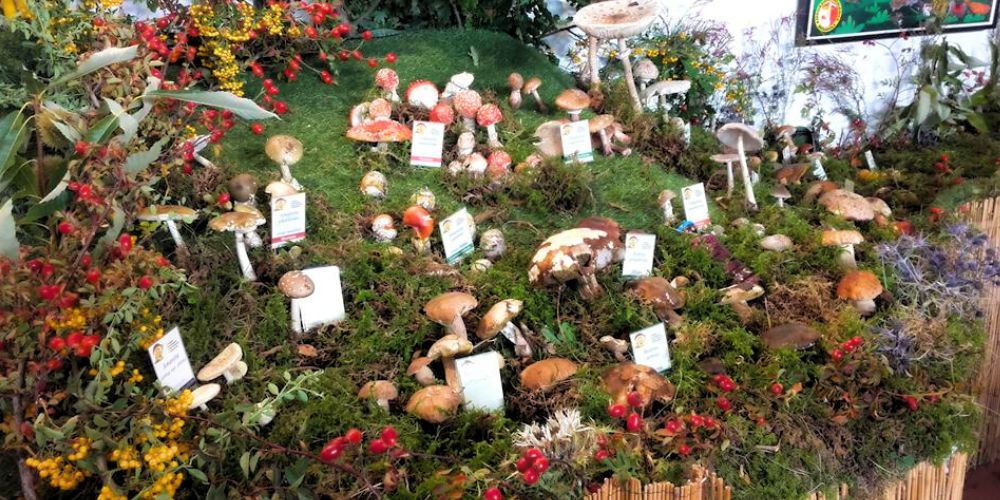
Like any village with such a rich and interesting past, Montottone is also the scene of numerous traditional events that gift emotions every year, giving citizens and tourists the chance to relive the best of history, folklore and local gastronomy.
In mid-June here in Montottone it is possible to rediscover with joy and enthusiasm the medieval charm of the city and all the goodness of the local cuisine, with the double appointment of Sagra degli Gnocchi and above all Palio delle Grazie, dedicated precisely to Madonna delle Grazie.
The palio opens with a long and solemn parade in colorful historical clothes in the heart of the ancient village, with the representatives and delegations of the seven districts of Montottone as protagonists holding their banners high - they are Eschito (horse), Forche di Tenna (bull), Monte Roso (squirrel), Pisciarello (fox), San Pietro Martire (crab), San Lorenzo (dragon), Trescio (snake) - ready to challenge each other in the evening in a heated competition for the victory of the town’s banner.
Speaking of districts, walking through the historic centre of Montottone it is impossible not to notice the small ceramic masterpieces that, door after door, embellish these splendid and picturesque alleys. Here, in fact, all the house numbers are painted on beautiful plaques that picture the colors and the heraldic animal of each district!
Autumn is also a time full of opportunities to visit Montottone. In fact, in the first week of October the village hosts the Mushroom Festival, including the interesting mushroom exhibition, a real themed conference dedicated to a category of food products that abound in the thick wooded areas of the territory (but be careful about the poisonous ones!).
And to best celebrate the cultural union that links Montottone to Germany, in particular the village of Kohren-Sahlis in Saxony, the third weekend of October is finally time for the Montoktoberfest: an unmissable opportunity to enjoy excellent beer and try the traditional regional dishes in a pure festive atmosphere!
What to eat in Montottone: the most typical food and wine products

And speaking of food and local delicacies, visiting Montottone and the other villages within Marca Fermana can be the best chance to discover and taste the typical food and wine products of Le Marche, with all the guaranteed quality of zero food miles.
Montottone offers tourists, especially the most gluttonous, the most good, genuine and typically local you can taste. Products with unique flavors and colors, from which emerges first of all the love for this land, and of course for beautiful and also good things, enhanced to their best by the expert hands of those who have been able to turn the simple rural tradition into the food and wine culture of the territory.
Among the typical dishes to taste in Montottone there are certainly the regional specialties, such as vincisgrassi (lasagna from Le Marche, prepared using also chicken in the filling and boiled must in the dough), frescarelli (a particular rice in polenta), maccheroncini di Campofilone IGP (a particular egg pasta typical of the province of Fermo) or tagliatelle with mushrooms (especially porcini mushrooms from Sibillini), fried meat (similar to the famous olive all'ascolana) and sweet donuts with grape must and anise (also called autumnal biscuits).
In Montottone, and throughout the province of Fermo, it is also possible to find some typical products that celebrate the most iconic artisan gastronomic productions, such as caciotta del fermano (a cheese produced by mixing different types of milk), ciauscolo (a typical soft salami), vino cotto del fermano and mistrà (an alcoholic drink made with natural distillates of aromatic plants, in particular anise). For wine lovers, in this territory the Offida DOCG and Rosso Piceno DOC are produced.
How to get to Montottone
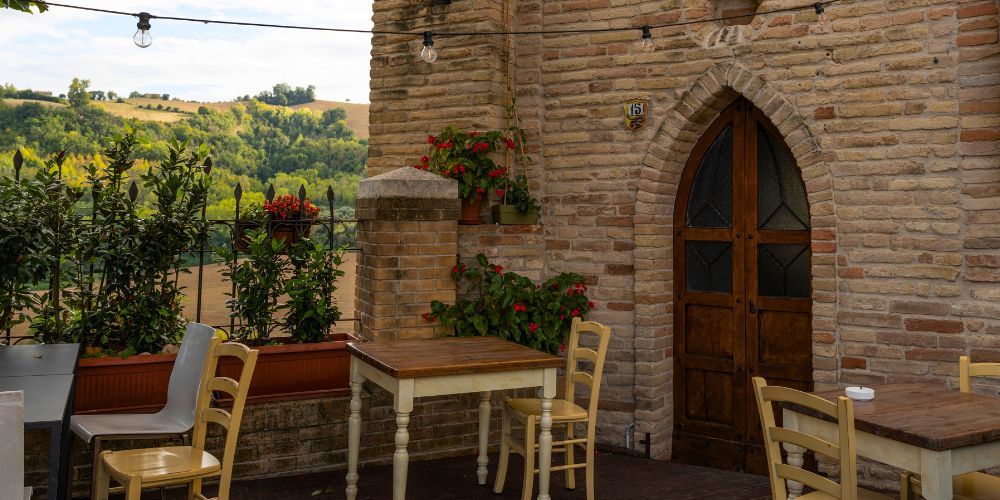
To get to Montottone you need to travel on the road, moving by your own means - by car or, why not, by bicycle - or by public transport - bus - in particular departing from Fermo.
If you have a car you can easily reach Montottone starting from Fermo driving along the SP112 Val d'Ete, finally continuing on SP61 to your destination (less than 30 minutes travel). If you prefer to move by bike enjoying the suggestive hilly landscape of Le Marche, you can instead have a ride following the rural routes along SP60 and SP61 (just over an hour's travel). If you need to rely on public transport, you can take the Fermo-Montelparo bus line (about 45 minutes travel).
If you want to visit Montottone starting from other locations along the Adriatic coast, even outside Marche region, a few important transport infrastructures to take into account for moving around by your own car are Autostrada A14 and Strada Statale SS16.
Traveling by public transport, regardless where you are coming from, whether by train, by bus or by plane, the main logistics centre for transport in the region is the city of Ancona; from here it will then be necessary to take further transport to Fermo and then Montottone.

